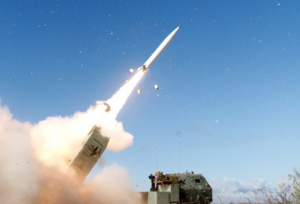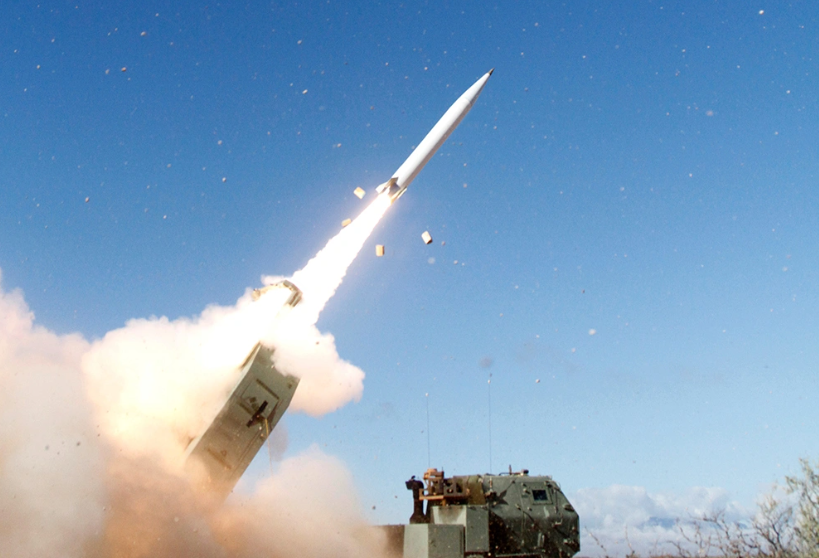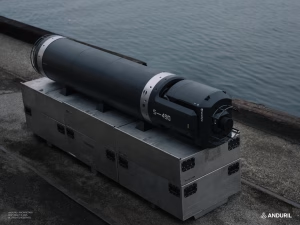SecNav Message. Newly confirmed Secretary of the Navy John Phelan released his first message to the fleet on April 1, in which he reiterated that revitalizing the shipbuilding and industrial base are “crucial, and we will aggressively pursue improvements.” He mirrored many statements of recent Navy leaders that “We must build better ships and better aircraft, and put them under, on and above the sea more quickly and more efficiently.” He added that via responsible stewardship, disciplined budgeting and robust oversight he intends to restore readiness, eliminate maintenance backlogs and ensure money allocated directly contributes to mission success. While quoting several past Navy leaders, Phelan said, “it is not enough to merely prepare. We must prevail. The days of risk aversion and hesitation are behind us. Change is coming. Together we will relentlessly pursue excellence and innovation.” He also said in the next weeks he will share messages on how Navy personnel can share feedback and inform his readiness strategy.
Tiger Triumph.
U.S. and Indian forces launched the fourth bilateral two week-long Tiger Triumph amphibious naval exercise on April 1. U.S. participants include the landing ship dock USS Comstock (LSD-45) with embarked U.S. Marines and Arleigh Burke-class guided-missile destroyer USS Ralph Johnson (DDG-114). The exercise will include about 3,000 personnel and at least four ships and seven aircraft combined, from both countries. Events include an amphibious beach landing and the first-ever subject matter expert exchange with U.S. and Indian industry partners, government representatives, and operators focused on applying autonomous capabilities for warfighter needs. The Navy underscored this is meant to advance the new U.S.-India Autonomous Systems Industry Alliance (ASIA) announced in February by President Trump and Prime Minister Modi.
T-ATS 11. The U.S. Navy and Austal USA christened the future USNS Billy Frank Jr. (T-ATS 11) Navajo-class Towing, Salvage and Rescue Ship during a ceremony at its Mobile, Ala., shipyard on March 29. The ship is named after a Korean War veteran and Nisqually tribal member Billy Frank Jr., who received an Albert Schweitzer Prize for humanitarianism; a Martin Luther King Jr. Distinguished Service Award; and, posthumously, a Presidential Medal of Freedom for his over 30-years of service to the Northwest Indian Fisheries Commission. This multi-mission ship will support various missions like towing, rescue, salvage, humanitarian assistance, oil spill response, and wide-area search and surveillance.
NATO Air Chiefs. U.S. Air Force Gen. James Hecker, the outgoing head of U.S. Air Forces in Europe and Air Forces Africa, hosted the NATO Air Chiefs Symposium 25-1 with representatives from more than 30 countries at Ramstein Air Base, Germany last Wednesday and Thursday. Among the topics discussed at the twice a year symposium were the use of dispersed forces, base defense, and decentralized command and control–what the Air Force has called Agile Combat Employment–and “integrated air and missile defense.”
Maven Smart System. Palantir Technologies’ Maven Smart System “has become the staple for our Joint All-Domain Command and Control system because it not only presents a picture of the battle space in multiple domains–most systems show one domain or another–but you can get all domains in Maven Smart System and the increasing number of layers of live data that can be brought in from undersea through space sensors displayed at the same time,” according to Air Force Gen. Gregory Guillot, the head of U.S. Northern Command and North American Aerospace Defense Command. “I see it [Maven Smart System] growing in the future.” Last May, Palantir received an up to $480 million contract to move Maven Smart System from the prototype phase into production. In January, the National Geospatial-Intelligence Agency hired Joe O’Callaghan, an early adopter of the system when he served as an Army colonel and fires coordinator for the 18th Airborne Corps.
AV-BlueHalo Nears. AeroVironment last week moved a step closer to completing its acquisition of BlueHalo after the company’s stockholders approved the issuance of its common stock to complete the deal. The acquisition is expected to close in May. AV last November agreed to acquire BlueHalo in an all-stock transaction valued at $4.1 billion, including BlueHalo’s debt of about $770 million and $100 million in tax assets.
AI Matching Service. The Defense Innovation Unit is partnering with commercial technology companies to develop the Defense Department’s Digital OnRamp platform, a secure single sign-on platform that will leverage generative artificial intelligence tools to match DoD business opportunities with commercial companies and academia, DIU said last week. The new Digital OnRamp is a two-way street. “As a matching tool for commercial technology and the department, we are seamlessly and securely integrating data sets to help the commercial sector find the best fit for their technology matched to a defense need with the training and support needed while also making commercial and academic solutions visible to department employees trying to solve a mission problem,” Cheryl Ingstad, DIU deputy director of digital platforms and developer ecosystem, said in a statement.
Drone Incursions. There were more than 700 unauthorized drone incursions during the recent Palisades Fire near Los Angeles, including one where an operator “lost track” of his small unmanned aircraft, which crashed into a Canadian Super Scooper plane that was conducting fire suppression operations and forcing it to land, Kevin Fetterman, an L.A. area fire chief, told the House Homeland Security Committee last week. The unauthorized incursions were done by more than 400 drones, which violated the Fire Traffic Area Temporary Flight Restriction, he said. During the period of Jan. 7 to Jan. 25, one drone was “even noted as high as 20,000 feet,” he said. Fetterman said the incursions “brought some of the worst air space deconfliction issues we have seen.” In California, “we say, ‘if you fly, we can’t,’” he said.
Jackals Beyond LEO. True Anomaly last week said its Jackal autonomous orbital vehicle will launch its first geostationary (GEO) and cislunar missions in 2026, adding to the company’s Jackal satellite bus line that initially is operating in low Earth orbit. For GEO, Jackal includes more payload and power capacity, improved structural shielding, an upgraded position, navigation, and timing (PNT) system, and other enhancements. For cislunar configuration, the bus features the same improvements as GEO as well as deep-space communications systems, expanded power generation, further improvements to PNT, and advanced thermal management. Jackal was designed from the start for applications across orbits and different roles.
USAID/China. The head of U.S. Africa Command told lawmakers this week China is “trying to replace” U.S Agency for International Development (USAID) services on the continent that were cut by the Trump administration. “China is responding by trying to replicate what capabilities USAID was very successful [at providing] across a number of years. They’re trying to replicate that whether it’s in health diplomacy or any development-type programs. They’re trying to use that as an extension of the Belt and Road initiative to gain favor by the African countries,” Marine Gen. Michael Langley, commander of U.S. AFRICOM, said during a Senate Armed Services Committee hearing.
Ukraine Aid. During the same SASC hearing, Army Gen. Christopher Cavoli, head of U.S. European Command, said if the U.S. were to withhold future security assistance and intelligence sharing to Ukraine it would have “a rapid and deleterious effect on their ability to fight.” “The Ukrainians depend on us principally – uniquely, I should say – for their high-end anti-aircraft systems. So the things that shoot down the ballistic missiles and the long-range attack missiles that Russians throw at them almost daily, that is mainly supplied by the United States. That would have an obvious effect,” Cavoli said. The Trump administration temporarily paused military aid to Ukraine in March, which was then lifted after Kyiv endorsed a 30-day ceasefire proposal aimed at ending Russia’s invasion. “Many of our allies have stepped up their ability to produce things for Ukrainians…There are some real advances and diversification of their supply sources,” Cavoli said. “But undoubtedly, the Ukrainians are very dependent on our assistance.”
…SACEUR Role. Cavoli, who also serves as NATO’s Supreme Allied Commander Europe, told lawmakers that not having a U.S. military leader in that role would be “problematic.” Several SASC members questioned Cavoli on the SACEUR role, which follows a recent NBC News report that the Trump administration has considered withdrawing the U.S. from the holding the position. “I think that would bring some challenges in terms of nuclear command and control. It would put us in a position where, in an Article 5 situation, we could have, for the first time since the first World War, large numbers of U.S. troops under non-U.S. command. So I think those are things that would have to be considered carefully,” Cavoli said. “That, of course, would be a policy decision. I merely laid out the advantages and disadvantages of it from a military perspective.”
SASC Advances Colby. SASC on April 1 also voted in favor of advancing Elbridge Colby’s nomination to be under secretary of defense for policy, sending it to the floor for full Senate consideration. Colby, who has previously argued in favor of shifting U.S. defense resources from Europe and the Middle East to the Indo-Pacific to focus efforts on China, served as deputy assistant secretary of defense for strategy and force development during the first Trump administration and most recently launched the Marathon Initiative policy research organization.
Spectrum Tool. The Army on April 2 said it has awarded a 14-month, $6.1 million Other Transaction Authority agreement to 3dB Labs, Inc. to develop and demonstrate the Spectrum Situational Awareness System (S2AS). “S2AS is intended to modernize the U.S. Army’s understanding and utilization of the electromagnetic spectrum. By detecting and identifying signals of interest, S2AS provides crucial situational awareness of the Electromagnetic Operational Environment,” the Army said in a statement. “The system will be deployed in both handheld and vehicle adaptable configurations to meet diverse mission requirements.”
Kuwait FMS. The State Department on April 3 said it has approved a potential $400 million foreign military sale with Kuwait to upgrade and recertify Patriot PAC-2 GEM and GEM-T missiles. “The proposed sale will improve Kuwait’s capability to meet current and future threats by assisting in maintaining higher levels of operational readiness while meeting its modernization and professionalization plans,” the Defense Security Cooperation Agency said in a statement.
Haugh Fired. President Trump’s decision on April 3 to fire Air Force Gen. Timothy Haugh, the dual-hatted commander of U.S. Cyber Command and director of the National Security Agency, received swift bipartisan pushback from lawmakers citing the lack of explanation for the decision. “General Tim Haugh is an outstanding leader and was doing a superb job at Cyber Command and National Security Agency. He was fired with no public explanation. This action sets back our Cyber and Signals Intelligence operations,” Rep. Don Bacon (R-Neb.), chair of the House Armed Services Committee’s Cyber, Information Technologies, and Innovation panel, said in a social media post. Sen. Jack Reed (D-R.I.), the Senate Armed Services Committee ranking member, noted reports have cited that Haugh’s ouster was suggested by far-right media figure Laura Loomer during a meeting with Trump. “I am alarmed and angered that, at the insistence of a far-right conspiracy theorist, President Trump dismissed one of the most skilled, accomplished officers in the U.S. military,” Reed said.
BAE VPM. BAE Systems on April 2 said it won a $70 million contract from prime submarine contractor General Dynamics Electric Boat for production of Virginia Payload Module (VPM) missile tubes for Block VI Virginia-class submarines (SSN) at its Louisville, Ky., facility. The VPM tubes sit in a new middle section of upcoming Virginia-class submarines to allow the boats to field up to seven Tomahawk cruise missiles each, ultimately making up for the upcoming retirement of the four Ohio-class SSGN guided-missile submarines. The SSGNs were previously converted from ballistic missile submarines (SSBNs). In this announcement, BAE noted the same facility builds SSN propulsors and heavy propulsor structures for Columbia-class SSBNs and the company has the capability and capacity “to take on additional work building submarine structures to further support the U.S. Navy.”
Tender Printing. The Director of the Naval Nuclear Propulsion Program on April 3 underscored submarine tenders currently have advanced manufacturing capabilities. “They made one of their own pure water valves. So we will make components right now that will go on submarines,” Adm. William Houston said on March 31 during a U.S. Navy Memorial speaker series event. He also noted the Navy added four standard and two classified additive manufacturers in the last year to expand the manufacturing base. “So the capacity that they’re adding is incredible, and we are making more and more components every year,” he added.











